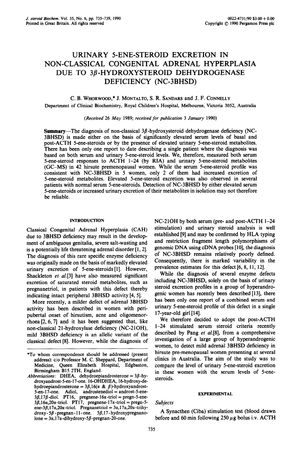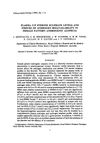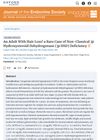Urinary 5-Ene-Steroid Excretion in Non-Classical Congenital Adrenal Hyperplasia Due to 3β-Hydroxysteroid Dehydrogenase Deficiency
May 1990
in “
Journal of Steroid Biochemistry
”
non-classical congenital adrenal hyperplasia 3β-hydroxysteroid dehydrogenase deficiency NC-3BHSD 5-ene-steroid hirsutism hyperandrogenism serum profiles urinary metabolites gas chromatography ACTH infusion test non-classical CAH 3β-HSD deficiency hirsute high androgen levels urine tests blood tests adrenal gland disorder

TLDR Some women with excess hair growth have a hormone condition that can't be diagnosed by blood or urine tests alone.
The study from 1990 investigated the diagnosis of non-classical 3β-hydroxysteroid dehydrogenase deficiency (NC-3BHSD) in 42 hirsute premenopausal women by measuring serum and urinary 5-ene-steroid levels. It found that 5 out of 42 women had serum profiles indicative of NC-3BHSD, but only 2 of these had increased urinary metabolites. The study revealed that neither serum nor urinary measurements alone are reliable for diagnosing NC-3BHSD, as some patients with normal serum levels had elevated urinary excretion. This inconsistency suggests that the diagnostic criteria for NC-3BHSD need refinement and may explain the variable prevalence rates among hyperandrogenic women. The document also notes that while gas chromatography techniques can diagnose specific enzyme abnormalities, they may not reliably detect NC-3BHSD without additional tests, such as an ACTH infusion test.






